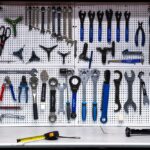What is kalibraatio?
Kalibraatio is a Finnish word meaning “Kalibraatio.” In engineering and science, calibration refers to the process of adjusting and verifying the accuracy of a measuring instrument by comparing it to a known standard. Kalibraatio ensures accurate, reliable, and consistent measurements in different environments, on different devices, and over different periods of time.
Whether in the laboratory, in industry, or even in a photo studio, calibration plays a crucial role in accuracy and quality.
Why is Kalibraatio important?
In both everyday life and professional life, small measurement errors can have serious consequences. For example, a poorly calibrated medical device can produce inaccurate readings, or an industrial sensor can lead to inefficient machine operation.
Key Benefits of Kalibraatio
Greater accuracy: Ensures precise readings.
Regulatory Compliance: Many industries require calibration to meet safety and quality standards.
Longer equipment life: Proper calibration reduces wear and tear.
Quality Assurance: Critical in areas such as manufacturing, healthcare, and environmental monitoring.
Where is Kalibraatio used?
Calibration is a cross-industry practice and essential wherever accurate measurements are required.
1.Healthcare and Medical Devices
Medical devices such as thermometers, blood pressure monitors, and MRI machines must be calibrated regularly to ensure patient safety and accurate diagnoses.
2.Manufacturing and Engineering
In manufacturing facilities, devices such as pressure gauges, flow meters, and robotic arms are calibrated to ensure production quality and prevent system failures.
3.Laboratories and Research
Research labs often use sensitive equipment such as spectrometers and pH meters. Without accurate calibration, results can be invalid or misleading.
4.Electronics and IT
Calibration of components such as oscilloscopes, voltmeters, and sensors is also important in electronics, especially in research and development.
5.Photography and Design
In the creative industries, color calibration of monitors and printers ensures color accuracy from digital design to physical printing.
The Calibration Process
Step 1: Selection of the Reference Standard
Calibration begins with the selection of a standard reference device: a reliable tool that provides highly accurate values.
Step 2: Comparison
The device under test is compared to the standard by measuring the same values (e.g., voltage, temperature, or pressure).
Step 3: Adjustment
If deviations occur, the device is adjusted until the measured values match the standard.
Step 4: Documentation
Each calibration is documented with the date, results, and responsible technician. This documentation is essential for audits and certifications.
Step 5: Certification (optional)
Many companies issue a calibration certificate confirming that the device has passed all required accuracy tests. This is especially important for industries that adhere to ISO standards.
Kalibraatio Types
Depending on the tool and application, Kalibraatio can be divided into several types:
Mechanical calibration: For tools such as micrometers, scales, and rulers.
Electrical calibration: For measuring instruments, sensors, and electronic devices.
Thermal calibration: Includes the calibration of thermometers, furnaces, and environmental chambers.
Dimensional calibration: For checking the dimensional accuracy of manufactured parts.
How often should calibration be performed?
The frequency of calibration depends on the equipment, industry requirements, and environmental conditions. However, some general guidelines are:
Annually: Most equipment should be calibrated once a year.
After repairs: Any repaired or damaged tool should be recalibrated.
Before critical tasks: For important measurements, prior calibration of the equipment ensures accuracy.
After environmental changes: Changes in temperature, humidity, and pressure can affect calibration.
Digital tools and calibration
Thanks to technological advances, many calibration processes are now automated or semi-automated. Digital calibration software helps technicians:
Track calibration plans
Store historical calibration data
Create and print certificates
Receive notifications when recalibration is required
Using digital tools improves the efficiency and accuracy of modern calibration processes.
Calibration Challenges
Although calibration is essential, it isn’t always straightforward.
Access to reference standards: Not all facilities have high-quality standard tools.
Human error: Manual processes can lead to inconsistent results.
Cost: Frequent calibrations and certifications can be costly.
Downtime: Equipment can be taken out of service during calibration, impacting productivity.
To minimize these problems, many companies outsource specialized calibration services.
Conclusion: The Role of Calibration in Accuracy and Reliability
Calibration is more than just a technical process: it’s a commitment to accuracy, safety, and quality. Whether in the medical, industrial, or creative fields, regular calibration of equipment helps prevent costly errors and increases confidence in the results.
Given the increasing reliance on measurement instruments in virtually all industries, understanding and implementing effective calibration practices is not only advisable, but essential.

![The rise of Insetprag: how it is transforming the sector/domain The Rise of Insetprag: How It’s Transforming [Industry/Field]](https://apkdatamod.com/wp-content/uploads/2025/12/irewolede-PvwdlXqo85k-unsplash-150x150.jpg)








